Surrounded by the wild waters of the North Atlantic, Iceland is a very geologically and volcanically active country that boasts many breathtakingly beautiful landscapes. As it lies on the Mid-Atlantic Ridge, the island is dotted with volcanoes; around 30 of them are active. These often lie amid large lava fields, beneath sparkling glaciers, or hidden away among rocky mountain peaks.
Exploring the country’s dramatic and diverse scenery is a delight. Spurting geysers and simmering hot springs can often be found around its spectacular stratovolcanoes. Home to around 130 volcanoes in total, Iceland’s many volcanic landscapes count amongst the most riveting in the country, attracting hordes of tourists every year.
10. Krafla
 © Milan_tesar / Dreamstime
© Milan_tesar / DreamstimeLying in the north of the island, Krafla is a lovely caldera surrounded by steaming vents, boiling mud pools and bubbling hot springs. In contrast to its fiery and frequent geothermal activity, its crater is home to a coldwater lake that is renowned for its delightful emerald blue colour.
While it only reaches 818 meters in height, Krafla’s otherworldly appearance makes it well worth checking out. Many people visit it alongside the nearby Myvatn Nature Baths.
9. Prestahnukur
Set in the Highlands of Iceland, the hulking presence of Prestahnúkur looms over the colourless, low-lying, and almost lifeless landscapes that lie around it. The dark and desolate look of the volcanic desert around the volcano is due to the millennia of lava flows and eruptions of ash that have mixed in with the earth.
Itself barren and rocky, Prestahnúkur and its 1,220-metre-high peak have a brooding and heavy feel about them. In the past, many people believed it was inhabited by ghosts. Its name in Icelandic means ‘peak of the priests,’ named after two men of the book who explored the mysterious mount found nothing amiss.
While these sagas and folktales were disproved, the atmospheric Prestahnúkur’s secluded setting certainly make for a memorable visit.
8. Snaefellsjokull
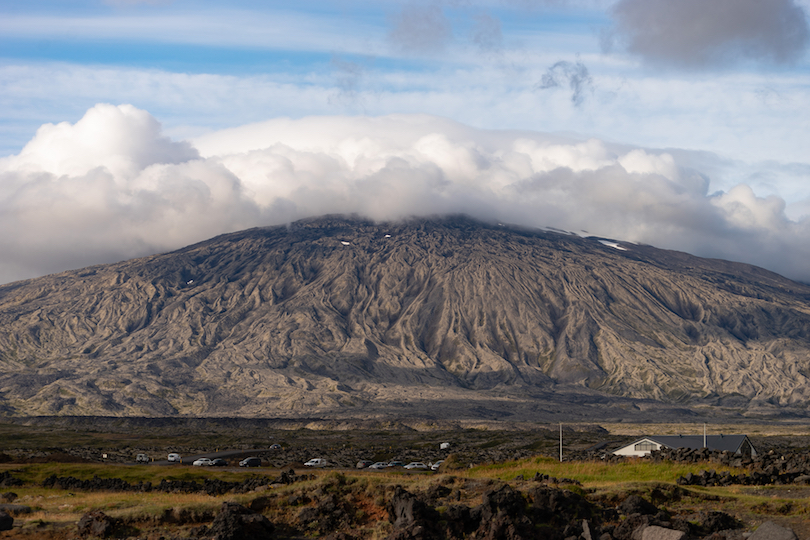 © Viktor Hladchenko / Dreamstime
© Viktor Hladchenko / DreamstimeOne of the most famous and photographed sights in the whole of Iceland, Snaefellsjokull lies perched at the tip of Snaefellsnes Peninsula, with icy waters lying all around it. Formed hundreds of thousands of years ago, the ancient stratovolcano is topped by glittering glaciers with crumbling cones, jagged craters, and lava-scarred landscapes also on show.
Besides its outstanding beauty, the 1,446-metre-high Snaefellsjokull is also noted for its cultural importance: it features in a number of Icelandic sagas and literary works. Of these, the most famous is undoubtedly Jules Vernes’ Journey to the Centre of the Earth.
Set within a marvelous national park of the same name, right in the far west of Iceland, Snaefellsjokull is one of the country’s most recognizable symbols.
7. Hverfjall
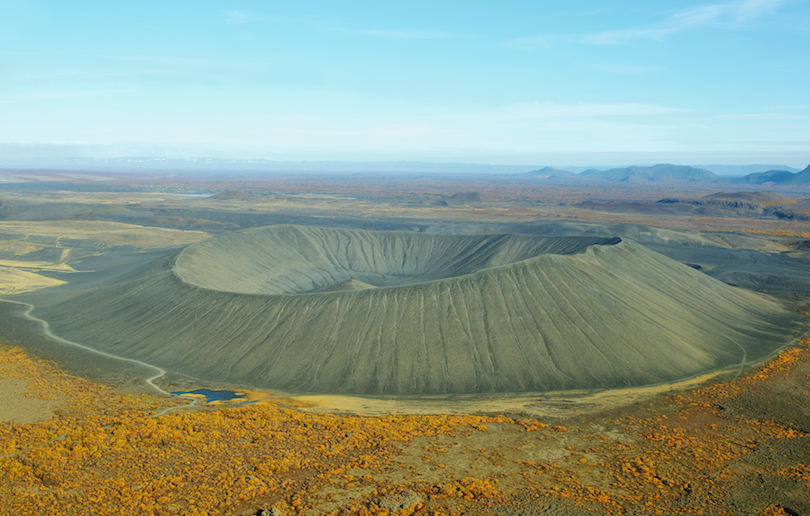 © Estivill / Dreamstime
© Estivill / DreamstimeKnown both as Hverfell and Hverfjall, this small, extinct volcano is one of northern Iceland’s most popular tourist attractions. This is because it lies just off the Ring Road and isn’t too hard or time consuming to hike.
You can easily clamber up its 420-metre-high tephra cone and amble around its kilometer-wide rim in just an hour. Appearing very much like a crater on the moon, Hverfjall’s crumbling and circular volcano walls lie amid a desolate and unforgiving landscape. The stocky tuff ring volcano is often visited alongside the shallow waters of Myvath that lie nearby.
6. Oraefajokull
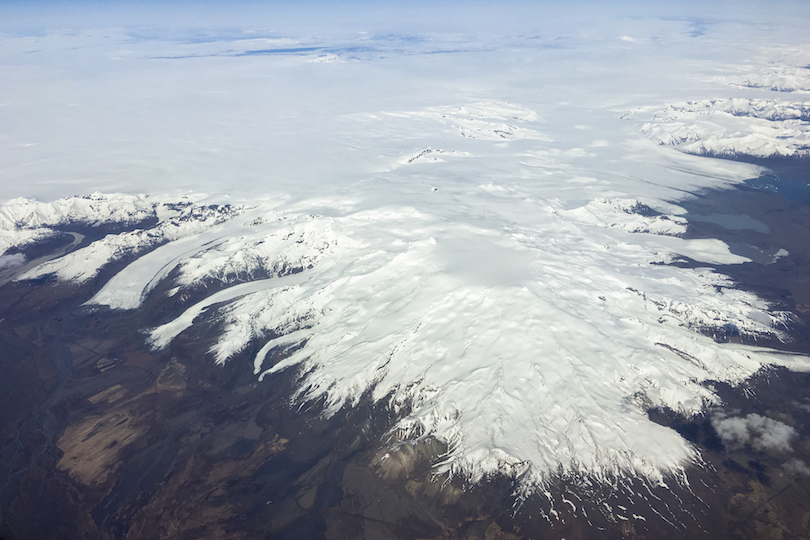 © Thorir Ingvarsson / Dreamstime
© Thorir Ingvarsson / DreamstimeLocated on the island’s southeastern coastline, Öræfajökull is both the largest active volcano in the country and its highest peak overall. Covered in a blindingly bright white glacier, the sprawling mount reaches 2,110 meters at its tallest point, with fabulous views to be enjoyed from its summit.
From up high, you can see out over the coastal cliffs, with Vik’s famous black sand beaches spied off in the distance. Set within Vatnakojull National Park, Öræfajökull is very popular amongst hikers due to its prominent and picturesque peak and all the stunning scenery that surrounds it.
5. Askja
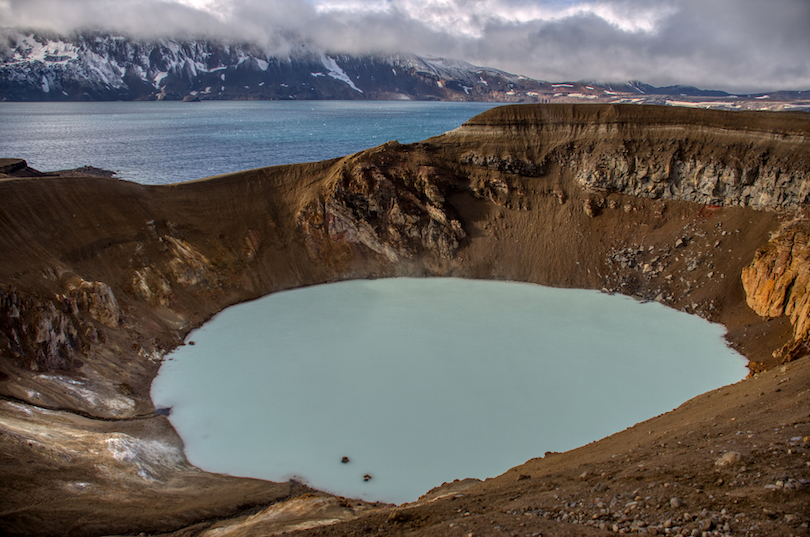
Set in Iceland’s wild and remote interior, Askja and its enormous caldera can only be reached by traversing the rugged terrain of Odadahraun – the island’s largest lava field and volcanic desert. While simply getting there is half the experience, Askja itself makes for an awe-inspiring sight; it boasts two beautiful lakes which stand out delightfully against the dark landscapes around them.
While the largest of the two, Oskjuvatn, is usually frozen over for most of the year, Vit, is actually warm enough to bathe in due to its bubbling hot springs. To add to the spectacular scene, the Dyngjufjoll Mountains lie all around Askja’s 1,516-meter-high caldera. These are home to lots of dramatic canyons and gorges.
The area’s appearance is so otherworldly that NASA sent astronauts here to prepare for their lunar missions.
4. Grimsvotn
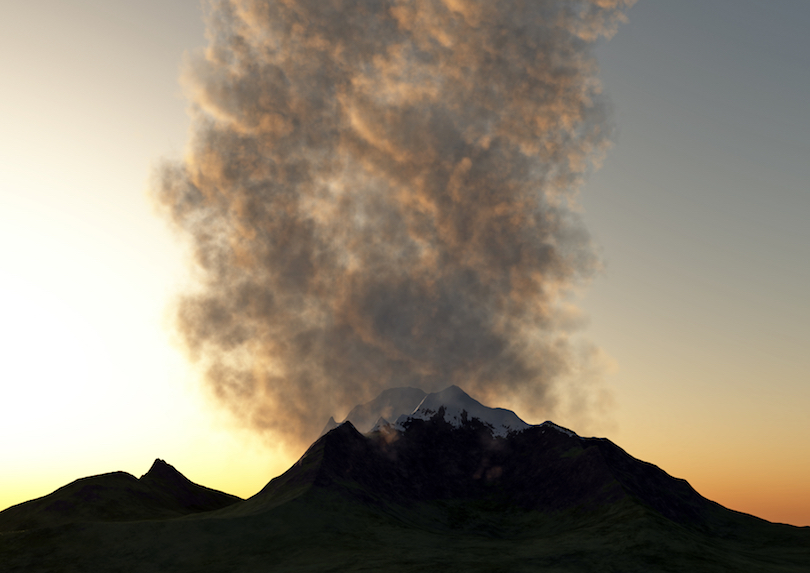 © Vampy1 / Dreamstime
© Vampy1 / DreamstimeThe most volatile of Iceland’s volcanoes, Grímsvötn is known to have erupted at least 60 times throughout its history, with the latest having occurred in 2011. This disrupted international air travel for days, as columns of thick smoke and ash rose into the sky. While the volcano certainly can erupt fiercely and ferociously, its small stature belies its awesome power.
This is because most of the 1,725-metre-high volcano actually lies beneath the large Vatnakojull ice-cap. Consequently, most of its craters are obscured from view, with only part of its caldera and crater protruding above the ice. This, however, makes for an impressive sight, with Vatnakojull National Park’s endless expanse of ice and snow lying all around it.
3. Hekla
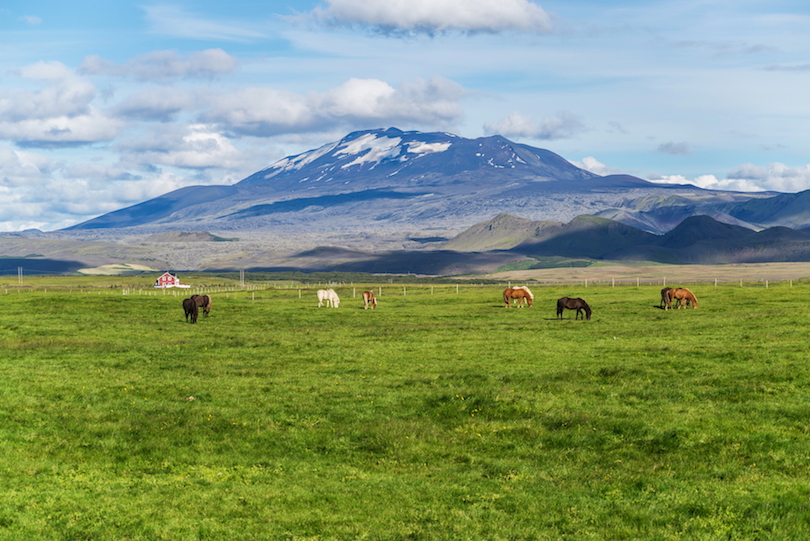 © Tomazkunst / Dreamstime
© Tomazkunst / DreamstimeDue to its frequent and fiery eruptions, Hekla is responsible for a large swathe of Iceland’s appearance. Over the millennia, it coated its surroundings in lava and tephra. It was the volcano’s tempestuous disposition that led to it being nicknamed the ‘Gateway to Hell’ in the Middle Ages.
Since it’s last eruption in 2000, Hekla is now a very popular place to go hiking. It generally takes around four hours to summit its 1,488-meter peak. Looking somewhat like an overturned boat, the stratovolcano’s long ridge is riddled with craters and is often covered in snow and small glaciers.
Looming above the desolate and devastated landscapes that lie around it, Hekla is one of island nation’s most famous volcanoes.
2. Katla
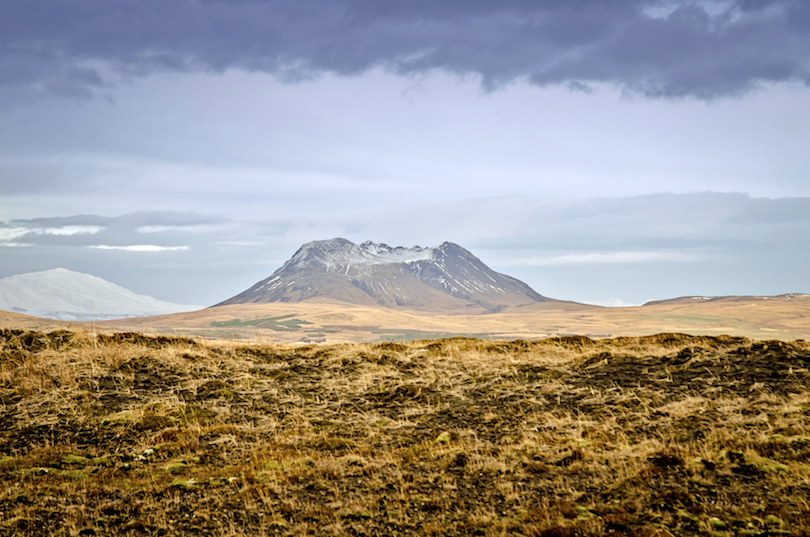 © Wynn / Dreamstime
© Wynn / DreamstimeLocated in a remote part of southern Iceland, Katla lies partially obscured by the glittering Myrdalsjokull glacier. This hides the fact that it is actually one of the largest and most powerful volcanoes in the country.
Towering to 1,512 meters, Katla boasts a ten kilometer-wide caldera, which is normally coated in hundreds of metres of ice. This rises imperiously above the surrounding lunar-like landscapes. The mighty mount has explosively erupted numerous times throughout its history, although the last violent event occurred in 1918.
Due to its proximity to Eyjafjallajökull, many believe that the neighbors are geologically related.
1. Eyjafjallajokull
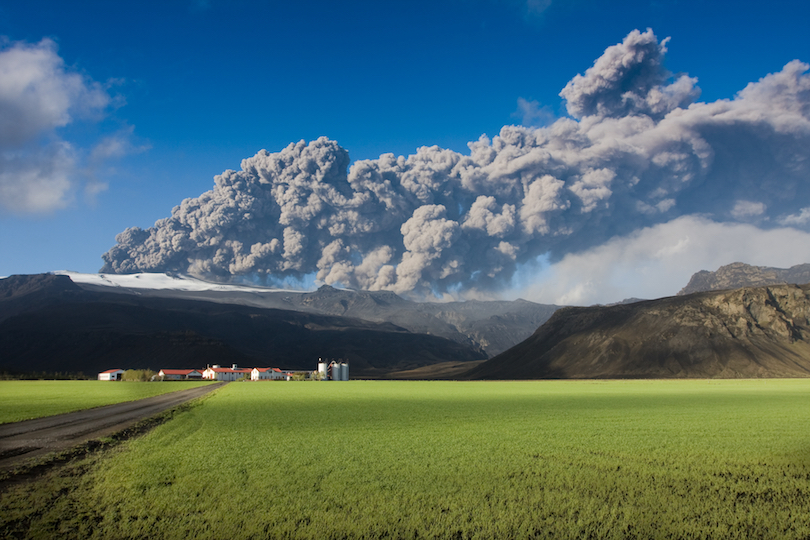 © Johann Helgason / Dreamstime
© Johann Helgason / DreamstimeFollowing its 2010 eruption, Eyjafjallajökull shot to international fame due to the disruption and chaos it wreaked on air travel in Europe for close to a week. The dramatic plumes of smoke and clouds of ash that billowed into the air marked the volcano’s most powerful and destructive eruption since 1823.
Considered dormant since then, Eyjafjallajökull lies just to the west of Katla, completely covered by a shining ice-cap. The stratovolcano’s crater rim is bordered by three peaks, with the 1,651-metre-high Hamundur being the tallest. Remarkably, the mountain’s south face used to be part of Iceland’s coastline until the sea retreated.
As such, its cliffs are now dotted with spectacular waterfalls, the most famous of which is Skogafoss. With so much incredible scenery on show and such an explosive recent history, Eyjafjallajökull is one of Iceland’s most amazing volcanoes.

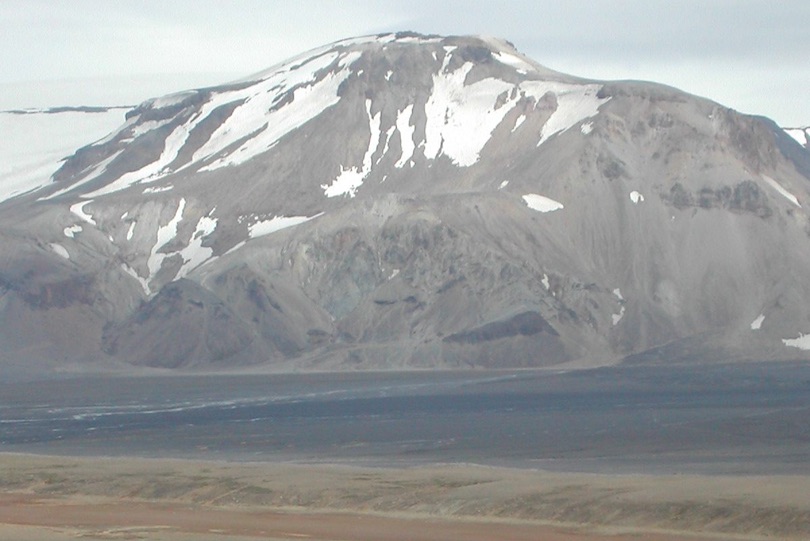
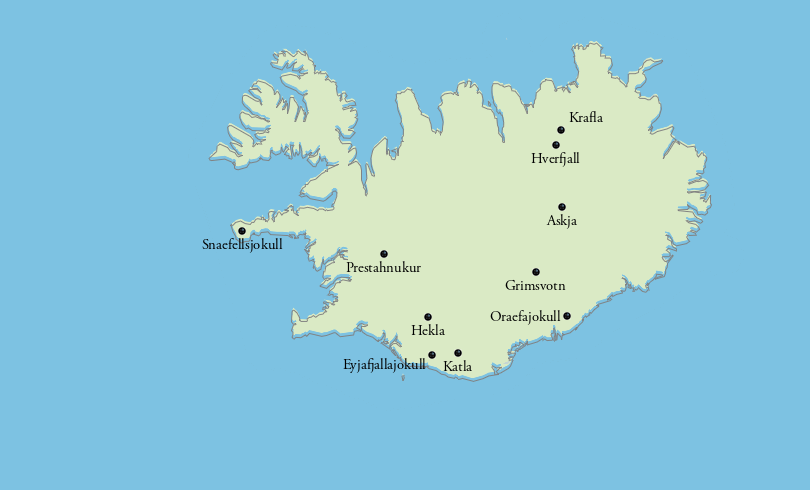
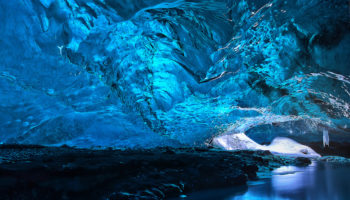
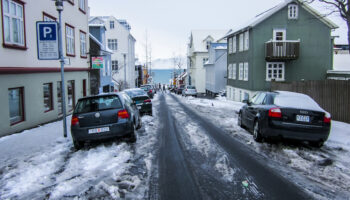
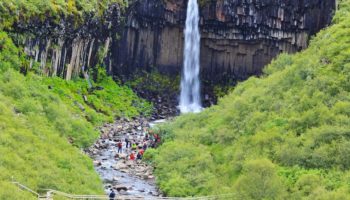
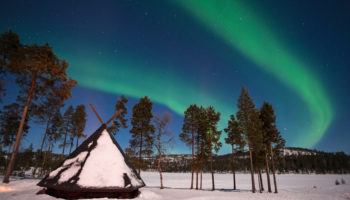
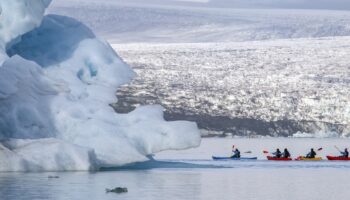
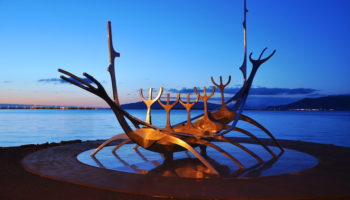
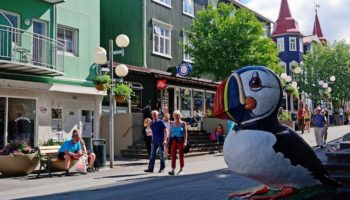
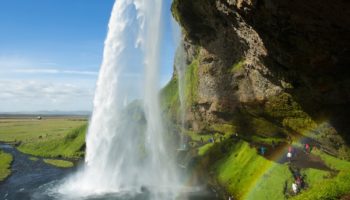
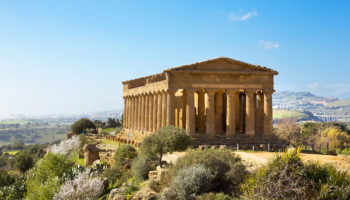

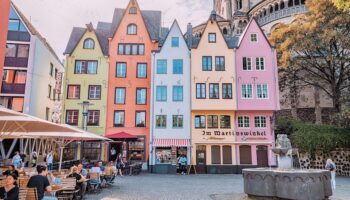

Leave a Reply